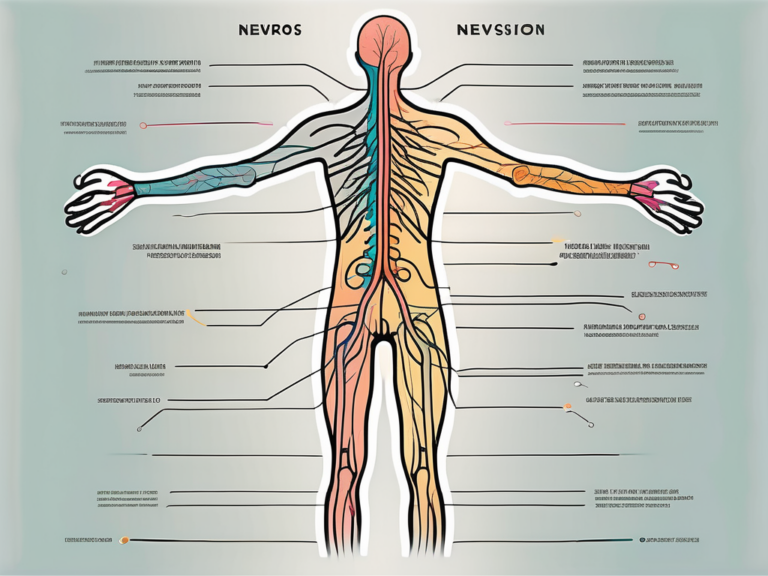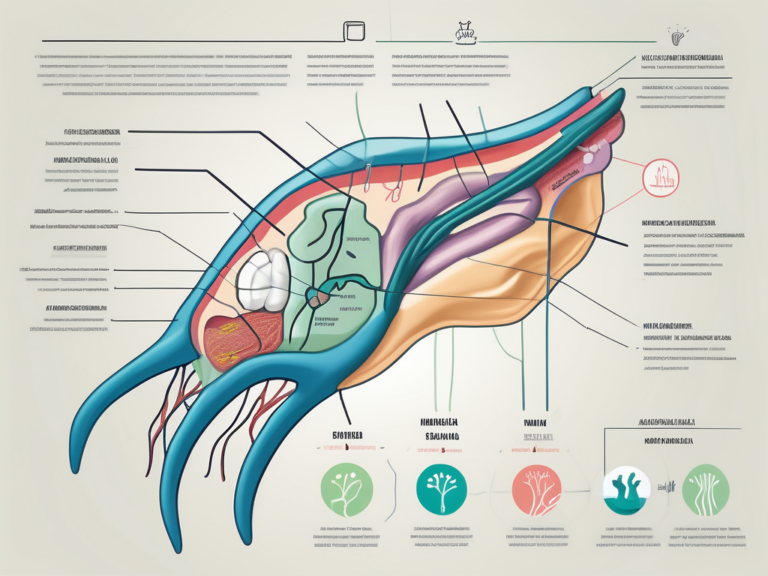Explaining Vagus Nerve Stimulators to kids
Explaining Vagus Nerve Stimulators to kids can be challenging, especially when it comes to understanding complex medical concepts. However, with the right approach and clear explanations, kids can grasp the basic principles behind these fascinating devices. In this article, we will break down the topic into digestible sections and provide child-friendly explanations, ensuring a better understanding for young minds.
Understanding the Vagus Nerve
Before we dive into the world of Vagus Nerve Stimulators, it’s important to understand the role of the Vagus Nerve in the body. The Vagus Nerve is one of the most important nerves in our body, connected to various organs and responsible for regulating essential bodily functions.
The Vagus Nerve, also known as the 10th cranial nerve, is the longest cranial nerve in the body, running from the brainstem all the way down to the abdomen. It is a key player in the parasympathetic nervous system, which is responsible for the body’s rest and digest response, counterbalancing the fight or flight response.
The Role of the Vagus Nerve in the Body
The Vagus Nerve acts as a messenger, carrying information between the brain and different organs such as the heart, lungs, and digestive system. It helps control important functions like breathing, heart rate, digestion, and even our mood!
Furthermore, the Vagus Nerve plays a crucial role in the gut-brain connection, often referred to as the “gut-brain axis.” This bi-directional communication system between the gut and the brain influences various aspects of our health, including our immune response, emotional well-being, and even cognitive functions.
How the Vagus Nerve Affects Our Health
When the Vagus Nerve is not working properly, it can cause problems with these vital functions. It may lead to conditions like seizures, depression, or even heart rhythm disorders. That’s where Vagus Nerve Stimulators come into play.
Vagus Nerve Stimulation (VNS) is a medical treatment that involves implanting a device that sends electrical impulses to the Vagus Nerve. This therapy has been used to treat epilepsy, depression, and even intractable migraines, offering new hope to patients with these challenging conditions.
The Concept of Vagus Nerve Stimulators
Vagus Nerve Stimulators are special devices that help regulate the Vagus Nerve’s activity and improve overall health. Understanding the purpose and functionality of these devices is essential in comprehending the benefits they offer.
These innovative devices have revolutionized the field of medical technology by offering a non-invasive and effective way to manage various health conditions. Vagus Nerve Stimulators have shown promising results in treating epilepsy, depression, and even inflammatory disorders.
The Purpose of Vagus Nerve Stimulators
Vagus Nerve Stimulators are used to treat certain conditions when other treatments have not been successful. They work by sending electrical signals to the Vagus Nerve, which helps regulate its activity and restore balance to the body.
By targeting the Vagus Nerve, these stimulators can modulate the autonomic nervous system, which plays a crucial role in regulating heart rate, digestion, and other involuntary bodily functions. This targeted approach allows for more precise treatment with fewer side effects compared to traditional medications.
How Vagus Nerve Stimulators Work
Imagine the Vagus Nerve as a sleepy superhero who needs a little boost to fight off the bad guys. Vagus Nerve Stimulators act as a power source, providing a gentle jolt to wake up the superhero and help them protect our body.
These devices are designed to deliver controlled electrical impulses to the Vagus Nerve, stimulating its activity and promoting a sense of well-being. The stimulation can help regulate mood, reduce inflammation, and even improve cognitive function, offering a holistic approach to health and wellness.
Simplifying Medical Jargon for Kids
When it comes to explaining medical concepts, jargon can be intimidating. Breaking down complex terms into simpler explanations and using relatable analogies can help kids understand these concepts better.
Understanding medical terms can sometimes feel like trying to decipher a secret code! But fear not, we are here to decode them for you. For instance, rather than using the term “electrical signals,” we can describe them as “special messages” that the Vagus Nerve receives to function properly. Think of it like the nerve getting text messages from the brain!
Breaking Down Complex Terms
Medical terms can sound like a foreign language sometimes! But don’t worry, we’re here to help translate them. For example, instead of using the term “electrical signals,” we can say “special messages” that the Vagus Nerve receives to work properly.
Exploring Analogies to Enhance Understanding
Comparing medical devices to everyday objects or situations can make them more relatable. For instance, we can compare Vagus Nerve Stimulators to superhero wristbands that provide a little extra energy when it’s needed the most.
Using Analogies to Explain Medical Devices
Understanding medical devices can be tricky, but with the right analogy, it becomes much simpler. For example, think of Vagus Nerve Stimulators as tiny helpers inside your body, like mini robots that give a boost of energy when required, just like a superhero’s wristband!
Discussing the Need for Vagus Nerve Stimulators
Understanding the conditions that require the use of Vagus Nerve Stimulators and explaining the procedure involved is vital to alleviate any fears or concerns that kids may have. Vagus Nerve Stimulators, also known as VNS, are implantable devices that send electrical impulses to the vagus nerve, which is a key player in the body’s autonomic nervous system. By stimulating this nerve, VNS can help regulate brain activity and mood in individuals with certain medical conditions.
Conditions that Require Vagus Nerve Stimulators
Vagus Nerve Stimulators are commonly used to help manage epilepsy, a condition characterized by seizures. In epilepsy patients, VNS can help reduce the frequency and intensity of seizures, providing a better quality of life. Additionally, these devices can also be used to treat depression in some cases. By modulating the nerve signals that affect mood regulation, VNS has shown promising results in improving symptoms of depression that may not respond to traditional treatments.
Explaining the Procedure to Kids
When it comes to the procedure itself, it’s important to emphasize that it is performed by medical professionals in a safe and controlled environment. The implantation of a Vagus Nerve Stimulator involves a small incision in the chest area where the device is placed, typically under the skin. A separate incision is made in the neck to connect the device to the vagus nerve. Despite sounding complex, the procedure is relatively quick and is done under anesthesia to ensure the child feels no pain. We can compare it to a simple visit to the doctor’s office, with careful attention paid to the child’s comfort throughout.
Addressing Common Fears and Concerns
It’s natural for kids to have fears and concerns about medical procedures. Addressing these concerns and dispelling common misconceptions can help alleviate anxiety and foster a sense of reassurance.
When it comes to medical procedures, especially ones involving innovative technologies like Vagus Nerve Stimulators, it’s understandable for children to feel apprehensive. However, by providing them with accurate information and addressing their fears head-on, we can help them feel more at ease and confident about the process.
Common Misconceptions about Vagus Nerve Stimulators
One common misconception is that Vagus Nerve Stimulators can read thoughts or control someone’s actions. To debunk this myth, we can explain that these devices only help regulate the Vagus Nerve’s activity and do not have any control over our thoughts or actions.
Furthermore, it’s essential to emphasize that Vagus Nerve Stimulators are designed with a specific medical purpose in mind – to assist individuals with certain medical conditions in managing their symptoms. They are not equipped with any capabilities to intrude on personal thoughts or behaviors.
Reassuring Kids about the Safety of the Procedure
It’s important to highlight that Vagus Nerve Stimulators are approved by medical experts and have been used safely for many years. Additionally, medical professionals will closely monitor the device’s effectiveness and safety throughout its use.
Moreover, the safety of the procedure is further ensured by the thorough training and expertise of healthcare providers who implant and oversee the functioning of Vagus Nerve Stimulators. Children can find comfort in knowing that their well-being is the top priority throughout the entire process, from implantation to ongoing care and monitoring.
Encouraging Open Dialogue
Creating a comfortable environment for discussion and encouraging kids to ask questions is essential in ensuring their understanding and addressing any lingering doubts or uncertainties.
When it comes to discussing Vagus Nerve Stimulators with children, it’s crucial to approach the topic with patience and empathy. These devices, which are used to help manage conditions like epilepsy and depression, can seem daunting at first glance. By fostering an open dialogue, you can help demystify Vagus Nerve Stimulators and alleviate any fears or misconceptions kids may have.
Importance of Questions and Answers
Questions are a powerful tool for learning! Encourage kids to ask questions and assure them that no question is too silly or unimportant. Answering their inquiries will help clarify any remaining doubts.
Moreover, by actively engaging with children’s questions, you not only provide them with valuable information but also show them the importance of curiosity and critical thinking. This can instill a lifelong love for learning and exploration.
Fostering a Comfortable Environment for Discussion
Listening attentively and providing clear explanations can create a safe space for kids to express their thoughts and concerns. This open communication will help them feel more at ease and confident in understanding Vagus Nerve Stimulators.
Additionally, incorporating interactive elements such as visual aids or real-life examples can further enhance children’s comprehension and make the topic more engaging. By tailoring the discussion to their level of understanding, you can ensure that the information resonates with them on a deeper level.
In conclusion, Explaining Vagus Nerve Stimulators to kids requires simplifying complex concepts, using relatable analogies, and addressing common fears. With clear explanations, open dialogue, and a genuine concern for their understanding, kids can develop a grasp of these important medical devices without feeling overwhelmed. Remember, it’s essential to consult medical professionals for expert advice and personalized guidance.






